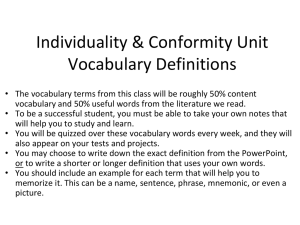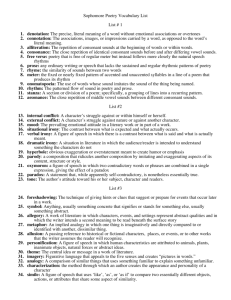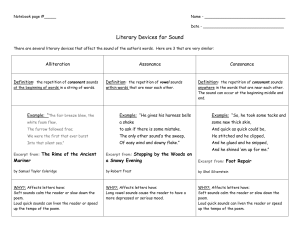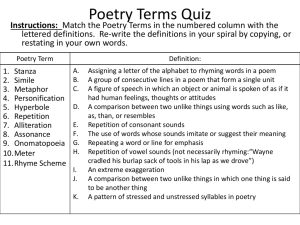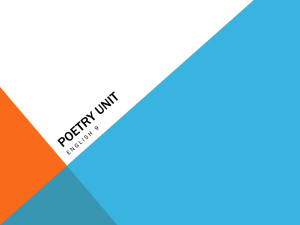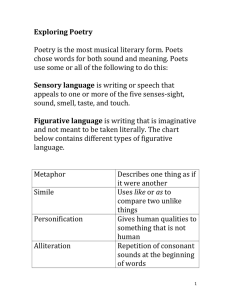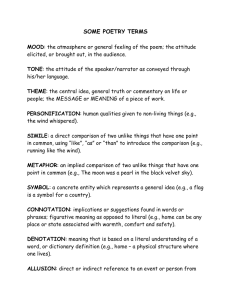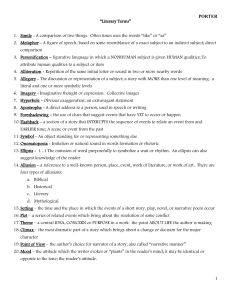Literary Terms Quiz and Test Schedule 10/6 10/23 Quiz Date
advertisement
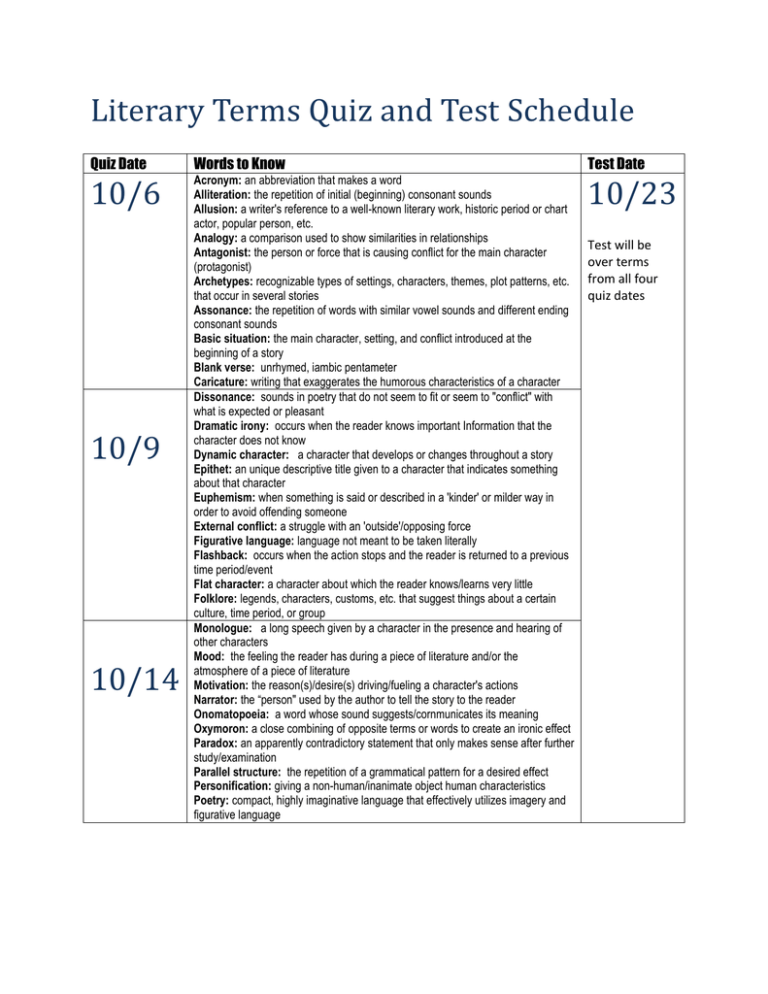
Literary Terms Quiz and Test Schedule Quiz Date Words to Know Test Date 10/6 Acronym: an abbreviation that makes a word Alliteration: the repetition of initial (beginning) consonant sounds Allusion: a writer's reference to a well-known literary work, historic period or chart actor, popular person, etc. Analogy: a comparison used to show similarities in relationships Antagonist: the person or force that is causing conflict for the main character (protagonist) Archetypes: recognizable types of settings, characters, themes, plot patterns, etc. that occur in several stories Assonance: the repetition of words with similar vowel sounds and different ending consonant sounds Basic situation: the main character, setting, and conflict introduced at the beginning of a story Blank verse: unrhymed, iambic pentameter Caricature: writing that exaggerates the humorous characteristics of a character Dissonance: sounds in poetry that do not seem to fit or seem to "conflict" with what is expected or pleasant Dramatic irony: occurs when the reader knows important Information that the character does not know Dynamic character: a character that develops or changes throughout a story Epithet: an unique descriptive title given to a character that indicates something about that character Euphemism: when something is said or described in a 'kinder' or milder way in order to avoid offending someone External conflict: a struggle with an 'outside'/opposing force Figurative language: language not meant to be taken literally Flashback: occurs when the action stops and the reader is returned to a previous time period/event Flat character: a character about which the reader knows/learns very little Folklore: legends, characters, customs, etc. that suggest things about a certain culture, time period, or group Monologue: a long speech given by a character in the presence and hearing of other characters Mood: the feeling the reader has during a piece of literature and/or the atmosphere of a piece of literature Motivation: the reason(s)/desire(s) driving/fueling a character's actions Narrator: the “person" used by the author to tell the story to the reader Onomatopoeia: a word whose sound suggests/cornmunicates its meaning Oxymoron: a close combining of opposite terms or words to create an ironic effect Paradox: an apparently contradictory statement that only makes sense after further study/examination Parallel structure: the repetition of a grammatical pattern for a desired effect Personification: giving a non-human/inanimate object human characteristics Poetry: compact, highly imaginative language that effectively utilizes imagery and figurative language 10/23 10/9 10/14 Test will be over terms from all four quiz dates 10/19 Simile: a comparison using like, as, or than Situational Irony: an unexpected event--an interesting surprise/coincidence Soliloquy: a long speech given by a character while alone an stage Speaker: the person who is doing the talking/speaking in a poem Stage directions: directions given to actor regarding what to do, how to act, and/or where to go while on stage Stanza: a group of words in a poem/song that convey/communicate a complete thought Static characters: a character that stays the same throughout a story Stereotype: a representative for a certain type of person or group of people Stream of consciousness: a style of writing which seeks to duplicate thoughts as they actually occur in the mind Style: the "way” a writer writes---involves syntax, sentence structure, tone, and diction
